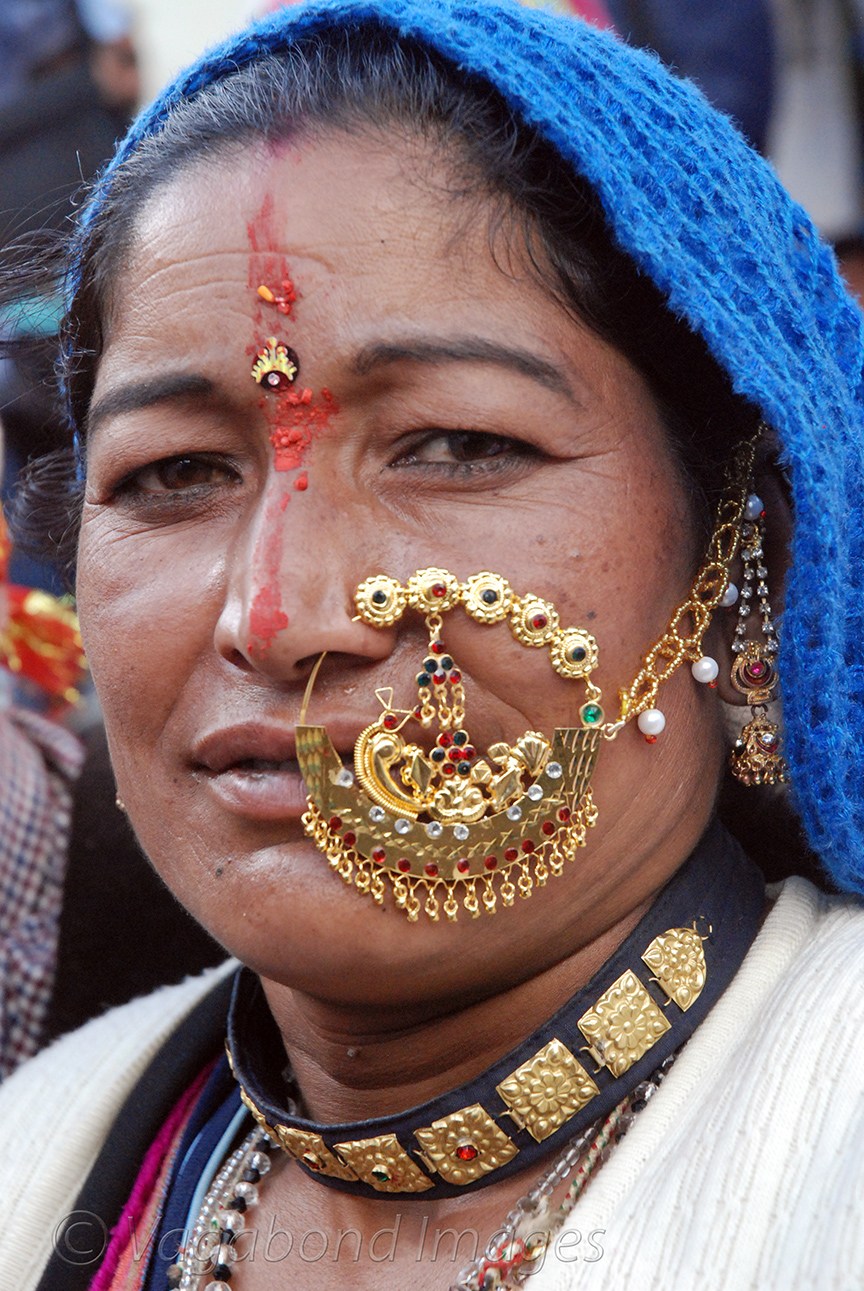Uttrakhand is one of the most beautiful states of North India. It has been blessed with a rich and diverse culture. From beautiful traditional nathuli to elegant kundals/bali, the traditional jewellery of Uttrakhand shows the simplicity of its surrounding nature and a rich mythology.
Here’s everything you need to know about the traditional jewellery of Uttrakhand.
Nathuli

Worn by the women of Garhwal, Kumaon and Jaunsar-Bawar region of Uttarakhand, Nathuli or Nath is the staple jewellery for Pahari women. Adorned widely by the Pahari brides, the nath or nose ring is a must-have jewellery piece in the bride’s attire. Nathuli or Nath not only showcases the rich culture of Garhwal region of Uttrakhand but it has also become a fashion statement. Nowadays, Nath is adorned by most of the Pahari and non-Pahari brides alike.
The number of pearls in the Nath signifies the financial status of the bride’s family. Tehri Nath is one of the most distinguished jewellery pieces of Uttarakhand. It is usually worn by the women at the time of marriage, social gatherings, puja and at important family functions.
Galabandh

Galabandh is one of the prominent jewellery pieces in Uttrakhand and is adorned by the women by Kumaoni, Garhwali, Bhotiya and Jaunsari women. As the name suggests, Galabandh is a choker necklace and is adorned around the neck by the married women.
Galabandh, the ornamental belt is designed with intricate detailing. The golden square shaped patches are fixed on a red colored belt with the help of a thread. While Galabandh is adorned by the rural women, it is not much popular among those who live in the cities.
Hansuli/Khagwali

Hansuli, also known by the name of ‘Khagwali’ is a choker necklace and is worn by Garhwali, Kumaoni, Jaunsari and Bhotiya women. Hansuli or Khagwali exudes the charm and beauty of Pahari women. People with a good financial status adorn a gold hansuli while the less affluent or poor people adorn a silver hansuli. Women usually wear Hansuli during festivals, weddings, social gatherings and important family functions.
Bulaq

Handcrafted with intricate motif designs, Bulaq is an exquisite piece of nose jewellery which is worn at the nasal septum. Earlier, it was worn by the women of Garhwal, Kumaon and of Jaunsar belt. But now it is considered as an old trend and is rarely adorned by the Pahari women.
Pahunchi

Pahunchi is a basically a Gold bangle and is quite popular in both Garhwal as well as Kumaon region of Uttarakhand. In Kumaon, Pahunchi is considered to be an auspicious jewel for the married women. It is usually worn by the married women at the time of festivals and important family functions. Pahunchi is generally made in 1 tola or 3/8 troy ounce. The quantity of Gold in Pahunchi depends on the financial status of the bride’s family.
Pahunchi uses a red coloured cloth as the base material on which the pure gold pearls are studded.
Pauje

One of the most commonly adorned jewellery pieces in a Pahari culture, Pauje is basically an anklet has a complex web-like structure which is slightly different from the usual Indian anklets. It is made of Gold or silver and has a lot of ghunghroos or metallic bells.
Bichhuwa

Made of silver, Bichhuwas are toe rings that are worn by Garhwali, Kumaoni, Jaunsari and Bhotiya women. These are crafted with the intricate designs consisting of Indian motifs, peacocks, flowers, and petals.
Kundal or Balis
Kundals are known as ‘Munad’, Murkhli, Munda, Balli, Tugyal etc in different local languages of Uttarakhand. Kundals are basically earrings adorned by Pahari women. Available in different shapes and size, kundals are either made in gold or silver. The most famous ones are the big gold earrings, having a circular shape.
Kamarbandh ( Tagdi or Tigdi)
 Kamarbandh is a belly-belt and is worn around the waistline by the women of different communities of Uttarakhand. There are two types of Kamarbandh one is made of cloth and the other one is made of silver.
Kamarbandh is a belly-belt and is worn around the waistline by the women of different communities of Uttarakhand. There are two types of Kamarbandh one is made of cloth and the other one is made of silver.
Kamarbandh is usually adorned by Pahari, Rajasthani and South Indian brides.
Kanfool or Karnfool
Kan-fool means the flower of Ear and is worn on the earlobe. It is a masterpiece of the classic era jewellery worn by the Pahari women. The classic piece of jewellery, kanfool is adorned by most of the Pahari women.
Murkhelai
Murkhelai is a type of earring and is attached with either red or white hanging beads.
Sikka Mala:

The Sikka mala commonly known as Kaldaar is one of those pieces of jewellery which is popular in many regions of the Himalayas. This simple jewellery comes fitted with a number of old coins or sikkas which gives it a rather interesting look.
Which type of jewellery did you like the most? Drop comments and let us know your favourite pick.
Comments
Post a Comment